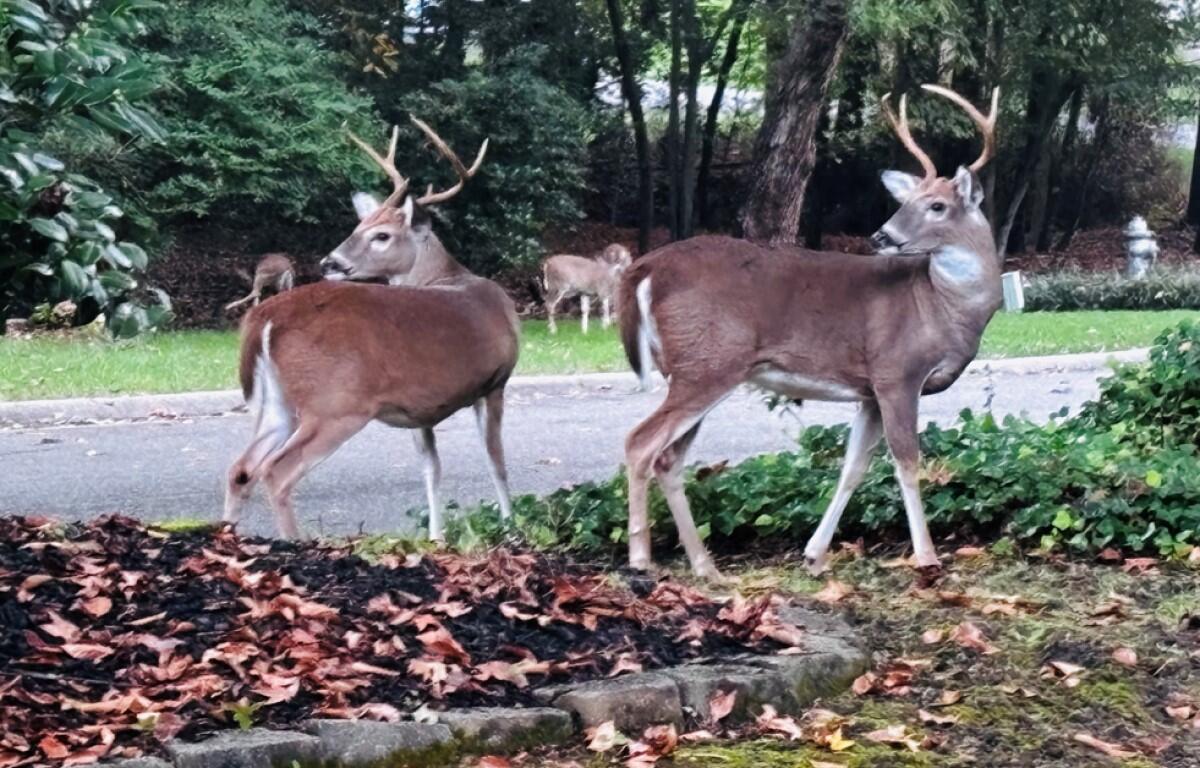CHARLOTTESVILLE, VA (CVILLE RIGHT NOW) – Tis the season deer on the rut are prone to get in the way of your route. Triple A MidAtlantic is reminding drivers October-December is mating season for deer and peak season for vehicle-versus-deer crashes.
The deer in rut are more active and more likely to dart into the road in what Triple A’s Morgan Dean describes to CvilleRightNow as an increased risk of “a costly and potentially deadly collision”.
Albemarle and Augusta counties both were in the top-10 in the Commonwealth in 2024 in car-v-deer. Augusta had the 2nd-most with 291 such crashes, a little more than 40 behind Loudoun County at the top.
Albemarle County was seventh with 194 such crashes in 2024.
“Deer-related crashes spike in the fall, peaking in November,” Dean said.
“Think of it this way, half of all deer crashes in Virginia happened in the last quarter of the year.”
Triple A reports about 2.1-million deer-related vehicle collisions occur across the nation causing more than $10-billion in economic losses and accounting for about 59,000 human injuries.
Dean said, “In Virginia last year, according to Virginia DMV, we saw 7486 deer-related crashes, up about 2% from 2023.”
On top of that, the monetary cost repairing damages to vehicles from deer-related crashes are skyrocketing.
“The average cost of an animal strike claim in Virginia in 2024, according to our Triple A insurance, was about $5500, up 43% from five years ago,” Dean said.
He notes cars these days are carrying more electronics and sensors than a few years ago, and most of those are situated in the front, on the windshield, and under the hood and bumper. All are the places most likely to have the brunt of impact.
“Drivers need to check their policies, and makes sure they have comprehensive insurance which covers a driver if they do collide with an animal.”
The reason why we’re seeing such crashes increase over previous years, according to Triple A, “With more and more development in fast-growing communities, deer have become much more noticeable along roadways and residential streets as that development has gone further and further into their territory.”
Dean said there’s a list of things drivers can do to protect themselves from animal collisions, “though, admittedly even if you do everything right, there’s still the potential you could be involved in a crash”:
* Keep your eyes moving back and forth: Continuously sweep your eyes across the road for signs of animals. While the most likely accident is caused by an animal darting in front of you, one might also run into the side of your car.
* Be especially attentive in early morning and evening: Many animals, especially deer, are most active during prime commuting hours – roughly 5-8 a.m. and 5-8 p.m.
* Know where deer may be near: Reduce speed and be alert near wooded areas or green spaces such as parks or golf courses and near water such as streams or ponds. Deer crossing signs indicate where high levels of deer/vehicle crashes have occurred in the past.
* At night, use high beams when there’s no oncoming traffic: Your bright lights can help you spot animals sooner. The light reflecting off their eyes may also reveal their location.
* Watch for other deer to appear: Deer rarely travel alone, so if you see one, there are likely to be one or more nearby.
* Honk your horn with one long blast: A long blast on your horn may frighten large animals, such as deer, away from your vehicle. The Insurance Information Institute (I.I.I.) advises against relying on devices such as deer whistles and reflectors, which have not been proven to reduce collisions with animals.
* Don’t veer for deer: If an animal is in your path, stay in your lane. Swerving away from animals can confuse them so they don’t know which way to run. It can also put you in the path of oncoming vehicles or cause you to crash into objects on the side of the road.
* Always wear a seatbelt: According to the Insurance Information Institute, the chances of getting injured when hitting an animal are much higher if you don’t have your seatbelt on.
If you collide with a deer:
* If possible, immediately move the vehicle to a safe location out of the roadway. Your safety and the safety of your passengers are most important.
* Once you are in a safe location and no longer driving, call the police.
* Put the vehicle’s hazard lights on, whether it is light or dark outside.
* Avoid making contact with the deer/animal. A frightened or wounded animal can hurt you or further injure itself.
* Contact your insurance company as quickly as possible to report any damage to your car.
* Take photos of the damage if you can do so safely and without entering the roadway.



